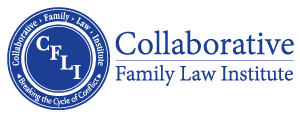When The Professionals Want The Collaborative Process More Than The Clients
To be successful, the Collaborative Process must be valued by the clients and the Collaborative Team.
by: Rebecca H. Fischer, Esq.
Fischer & Feldman, P.A., rfischer@lff-law.com
Four Collaborative cases came to my office in December. One resulted in the signing of a Collaborative Marital Settlement Agreement, while the second case is now in litigation. The third case was pro bono and went back into the court system, and the fourth case remains a mystery as to its status. I was terminated for not advocating or being positional enough for my client’s liking. In all the Collaborative cases I have worked on with a team, only one other case ended in litigation. What went wrong with three out of four of my December cases? Was it the stress of COVID on the families? Was it me? I was indeed a common denominator in all of them. Or were these cases that did not belong in the Collaborative Process from the beginning?
In a recent Pauline Tesler webinar, Pauline held the Collaborative Process out as the “golden apple.” A process to which the client has to earn the right to be a part and aspire to engage. I never thought of the burden of the Collaborative Process being on the client. I viewed my job as getting the client through the Collaborative Process. The problem with my view of the world has proven to be many fold. First, I do not know the nature of the other spouse or the attorney to be chosen by the spouse. Second, I am not a psychologist. I do not necessarily understand the nuances of my client’s emotional issues to know early in the case whether he or she has what it takes to reach for the “golden apple.” Third, I want to be a Collaborative attorney. I thought it was my responsibility to encourage my clients to choose Collaborative instead of litigation.
What I learned from the three cases not resulting in signed Collaborative Marital Settlement Agreements was this: I, along with the rest of the team, wanted a positive outcome more than the two clients did—or at least one of them. We worked hard and long hours, trying to achieve a positive outcome. The clients did not work nearly as hard, nor did they “choose” to be Collaborative. Had I—had the team—recognized earlier in the Process that we wanted the Process to succeed more than the clients, we might have saved them a lot of money and ourselves a lot of frustration and time (none of us billed for all of our time) and the pro bono case was—well—pro bono.
I have now learned to be more vigilant in screening my cases, listening more than talking, and watching for signs that I am working harder in the Collaborative Process than our clients. If our clients do not want to settle using the Collaborative Process, the professional team needs to rethink where the matter is going and how we are working within the Process. If the Collaborative Process is indeed the “golden apple,” then it is a process to be earned not given. We need to be cautious in moving forward with the Process about which we are so passionate.

